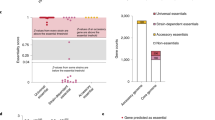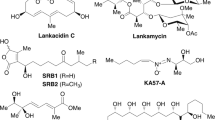Abstract
Since the first microbial genome was sequenced in 1995, 30 others have been completed and an additional 99 are known to be in progress. Although the early emphasis of microbial genomics was on human pathogens for obvious reasons, a significant number of sequencing projects have focused on nonpathogenic organisms, beginning with the release of the complete genome sequence of the archaeon Methanococcus jannaschii in 1996. The past 18 months have seen the completion of the genomes of several unusual organisms, including Thermotoga maritima, whose genome reveals extensive potential lateral transfer with archaea; Deinococcus radiodurans, the most radiation-resistant microorganism known; and Aeropyrum pernix, the first Crenarchaeota to be completely sequenced. Although the functional characterization of genomic data is still in its initial stages, it is likely that microbial genomics will have a significant impact on environmental, food, and industrial biotechnology as well as on genomic medicine.
This is a preview of subscription content, access via your institution
Access options
Subscribe to this journal
Receive 12 print issues and online access
$209.00 per year
only $17.42 per issue
Buy this article
- Purchase on Springer Link
- Instant access to full article PDF
Prices may be subject to local taxes which are calculated during checkout

Similar content being viewed by others
References
Fleischmann, R.D. et al. Whole-genome random sequencing and assembly of Haemophilus influenzae Rd. Science 269, 496–512 (1995).
TIGR Microbial Database. http://www.tigr.org/tdb/mdb/mdb.html
Fraser, C.M. et al. The minimal gene complement of Mycoplasma genitalium. Science 270, 397–403 (1995).
Nelson, K.E. et al. Evidence for lateral gene transfer between Archaea and bacteria from genome sequence of Thermotoga maritima. Nature 399, 323–329 (1999).
Tekaia, F., Lazcano, A. & Dujon, B. The genomic tree as revealed from whole proteome comparisons. Genome Res. 9, 550–557 (1999).
Paulsen, I.T., Nguyen, L., Sliwinski, M.K., Rabus, R. & Saier, M.H. Jr. Microbial genome analyses: comparative transport capabilities in eighteen prokaryotes. J. Molec. Biol. 301, 75–101 (2000).
Heidelberg, J.F. et al. DNA sequence of both chromosomes of the cholera pathogen Vibrio cholerae. Nature 406, 477–483 (2000).
Frangeul, L. et al. Cloning and assembly strategies in microbial genome projects. Microbiology 145, 2625–2634 (1999).
Gardner, M.J. et al. Chromosome 2 sequence of the human malaria parasite Plasmodium falciparum. Science 282, 1126–1132 (1998).
Delcher, A.L. et al. Improved microbial gene identification with GLIMMER. Nucleic Acids Res. 27, 4636–4641 (1999).
Tatusov, R.L., Galperin, M.Y., Natale, D.A., & Koonin E.V. The COG database: a tool for genome-scale analysis of protein functions and evolution. Nucleic Acids Res. 28, 33–36 (2000).
Bateman, A. et al. Pfam 3.1: 1313 multiple alignments and profile HMMs match the majority of proteins. Nucleic Acids Res. 27, 260–262 (1999).
Comprehensive Microbial Resource. http://www.tigr.org/tigr-scripts/CMR2/CMRHomePage.spl
Schuster, S., Fell, D.A. & Dandekar, T. A general definition of metabolic pathways useful for systematic organization and analysis of complex metabolic pathways. Nat. Biotechnol. 18, 226–332 (2000).
Traini, M. et al. Towards an automated approach for protein identification in proteome projects. Electrophoresis 19, 1941–1949 (1998).
Cordwell, S.J. et al. The microbial proteome database—an automated laboratory catalogue for monitoring protein expression in bacteria. Electrophoresis 20, 3580–3588 (1999).
Hays, L.B., Chen, Y.S. & Hu, J.C. Two-hybrid system for characterization of protein–protein interactions in E. coli. Biotechniques 29, 288–290, 292–294, 296 (2000).
De Wildt, R.M.T., Mundy, C.R., Gorick, B.D. & Tomlinson, I.M. Antibody arrays for high-throughput screening of antibody–antigen interactions. Nat. Biotechnol. 18, 989–994 (2000).
Diehn, M., Eisen, M.B., Botstein, D. & Brown. P.O. Large-scale identification of secreted and membrane-associated gene products using DNA microarrays Nat. Genet. 25, 58–62 (2000).
Hutchison, C.A. et al. Global transposon mutagenesis and a minimal Mycoplasma genome. Science 286, 2165–2169 (1999).
Kawarabayasi, Y. et al. Complete genome sequence of an aerobic hyper-thermophilic crenarchaeon, Aeropyrum pernix K1. DNA Res. 6, 83–101, 145–152 (1999).
Deckert, G. et al. The complete genome of the hyperthermophilic bacterium Aquifex aeolicus. Nature 392, 353–358 (1998).
White, O. et al. Complete genome sequence of the radioresistant bacterium, Deinococcus radiodurans R1. Science 286, 1571–1577 (1999).
Venkateswaran, A. et al. Physiologic determinants of radiation resistance in Deinococcus radiodurans. Appl. Environ. Microbiol. 66, 2620–2626 (2000).
Lange, C.C., Wackett, L.P., Minton, K.W. & Daly, M.J. Engineering a recombinant Deinococcus radiodurans for organopollutant degradation in radioactive mixed waste environments. Nat. Biotechnol 16, 929–933 (1998).
de Saizieu, A. et al. Microarray-based identification of a novel Streptococcus pneumoniae regulon controlled by an autoinduced peptide. J. Bacteriol. 182, 4696–703 (2000)
Oh, M.K. & Liao, J.C. Gene expression profiling by DNA microarrays and metabolic fluxes in Escherichia coli. Biotechnol. Prog. 16, 278–286 (2000).
Bammert, G.M., & Fostel, J.M. Genome wide expression patterns in Saccharomyces cerevisiae: comparison of drug treatment and genetic alterations affecting biosynthesis of ergosterol. Antimicrob Agents Chemother. 44, 1255–1265 (2000).
Rao, M.B., Tanksale, A.M., Ghatge, M.S., & Deshpande, V.V. Molecular and biotechnological aspects of microbial proteases. Microbiol. Mol. Biol. Rev. 62, 597–635 (1998).
Karp, P.D. et al. The EcoCyc and MetaCyc databases. Nucleic Acids Res. 28, 56–59 (2000).
Pearl F. et al. Assigning genomic sequences to CATH. Nucleic Acids Res. 28, 277–282 (2000).
Perriere, G., Duret, L. & Gouy, M. HOBACGEN: database system for comparative genomics in bacteria. Genome Res. 10, 379–385 (2000).
Tomita, M. et al. E-CELL: software environment for whole-cell simulation. Bioinformatics 15, 72–84 (1999).
Maymo-Gatell, X., Chien, Y., Gossett, J.M. & Zinder, S.H. Isolation of a bacterium that reductively dechlorinates tetrachloroethene to ethene. Science 276, 1568–1571(1997).
Akopyants, N.S. PCR-based subtractive hybridization and differences in gene content among strains of Helicobacter pylori. Proc. Natl. Acad. Sci. USA 95, 13108–13113 (1998).
Russell, N.J. Toward a molecular understanding of cold activity of enzymes from psychrophiles. Extremophiles 4, 83–90 (2000).
Robb, F.T. et al. Archaea, a laboratory manual. (Cold Spring Harbor Press, Cold Spring Harbor, NY; 1995).
Garcia, B. et al. Novel biodegradable aromatic plastics from a bacterial source. Genetic and biochemical studies on a route of the phenylacetyl-coA catabolon. Biol. Chem. 274, 29228–29241 (1999).
Blackburn, M., Golubeva, E., Bowen, D. & French-Constant, R.H. Insecticidal toxins from the bacterium Photorhabdus luminescens. Appl. Environ. Microbiol. 64, 3036–3041 (1998).
Bult, C.J. et al. Complete genome sequence of the methanogenic archeon, Methanococcus jannaschii. Science 273, 1058–1073 (1996).
Aravind, L. et al. Evidence for massive gene exchange between archaeal and bacterial hyperthermophiles. Trends Genet. 14, 442–444 (1998).
Read, T.D. et al. Genome sequences of Chlamydia trachomatis MoPn and Chlamydia pneumoniae AR39. Nucleic Acids Res. 28, 1397–1406 (2000).
Kawarabayasi, Y. et al. Complete sequence and gene organization of the genome of a hyper-thermophilic archaebacterium, Pyrococcus horikoshii OT3. DNA Res. 5, 55–76 (1998).
Lawrence, J.G. & Ochman, H. Molecular archaeology of the Escherichia coli genome. Proc. Natl. Acad. Sci. USA 95, 9413–9447 (1998).
Ribosomal Database Project. http://www.cme.msu.edu/RDP/html/index.html
Felsenstein, J. PHYLIP-Phylogeny Inference Package (Version 3.2). Cladistics 5, 164–166 (1989).
Acknowledgements
The authors would like to thank Dr. Daniel Bond for many useful discussions in the formulation of this manuscript.
Author information
Authors and Affiliations
Corresponding author
Rights and permissions
About this article
Cite this article
Nelson, K., Paulsen, I., Heidelberg, J. et al. Status of genome projects for nonpathogenic bacteria and archaea. Nat Biotechnol 18, 1049–1054 (2000). https://doi.org/10.1038/80235
Received:
Accepted:
Issue Date:
DOI: https://doi.org/10.1038/80235
This article is cited by
-
Microbiome in Hidradenitis Suppurativa: Current Evidence and Practice
Current Dermatology Reports (2022)
-
Changes in soil taxonomic and functional diversity resulting from gamma irradiation
Scientific Reports (2019)
-
Pcal_1311, an alcohol dehydrogenase homologue from Pyrobaculum calidifontis, displays NADH-dependent high aldehyde reductase activity
Extremophiles (2017)
-
Pcal_1127, a highly stable and efficient ribose-5-phosphate pyrophosphokinase from Pyrobaculum calidifontis
Extremophiles (2016)
-
Pcal_1699, an extremely thermostable malate dehydrogenase from hyperthermophilic archaeon Pyrobaculum calidifontis
Extremophiles (2016)



